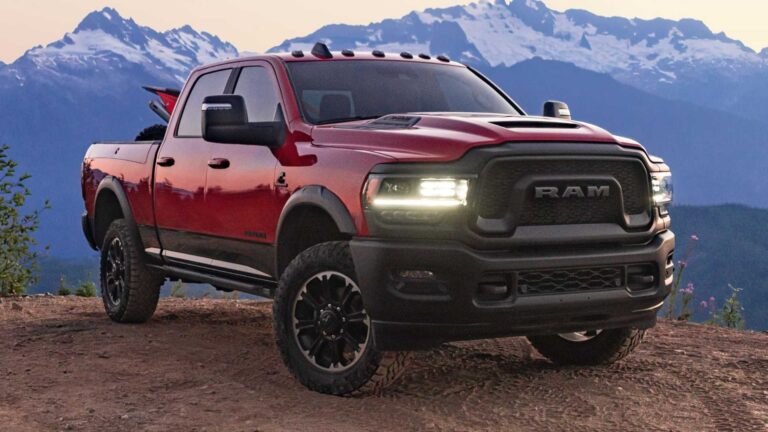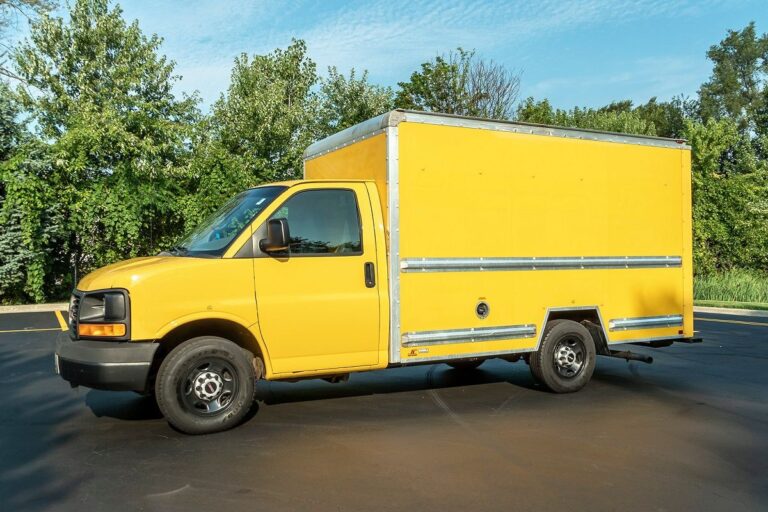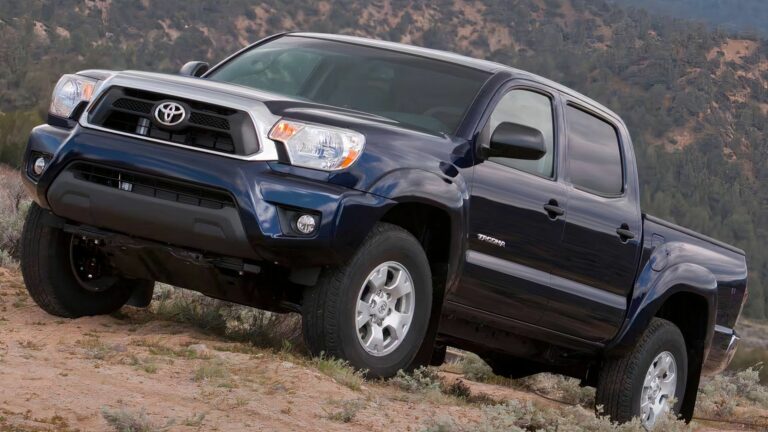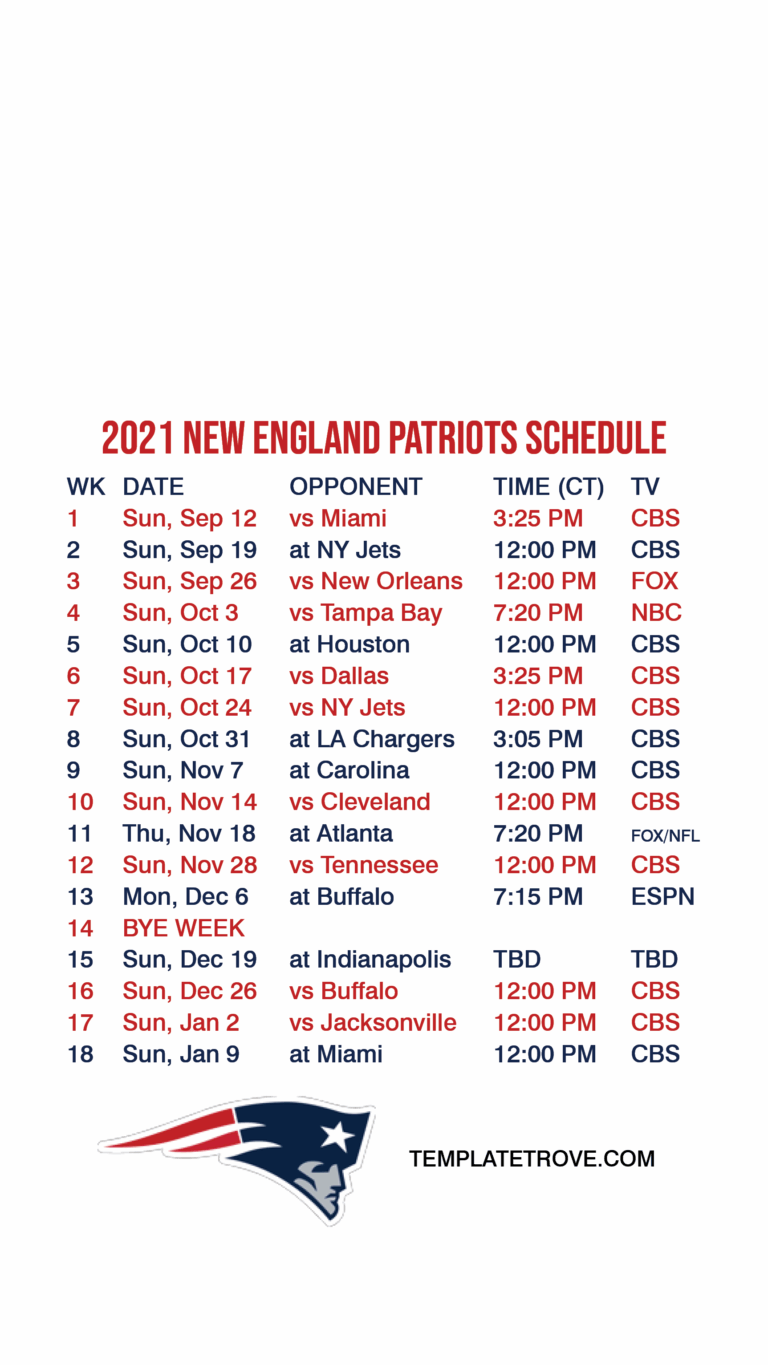Pulling Trucks For Sale: Your Ultimate Guide to Entering the World of Competitive Truck Pulling
Pulling Trucks For Sale: Your Ultimate Guide to Entering the World of Competitive Truck Pulling cars.truckstrend.com
The ground shakes, the roar of highly tuned engines fills the air, and a plume of exhaust signals the immense power unleashed as a colossal machine strains against an immovable sled. This is the exhilarating world of truck pulling – a motorsport where raw horsepower meets strategic weight distribution and sheer grit. For enthusiasts looking to dive into this adrenaline-fueled sport, the journey often begins with finding the right "pulling truck for sale."
This comprehensive guide will navigate the intricate landscape of buying a pulling truck, offering insights, practical advice, and crucial considerations to ensure you make an informed decision and embark on your pulling journey with confidence.
Pulling Trucks For Sale: Your Ultimate Guide to Entering the World of Competitive Truck Pulling
What Exactly is a Pulling Truck?
At its core, a pulling truck is a highly specialized vehicle engineered for one purpose: to pull a weighted sled as far as possible down a dirt track. Unlike standard street trucks, these machines are beasts of burden, meticulously modified to maximize power, optimize traction, and withstand incredible stress. They are not merely lifted trucks with big tires; they are precision-built instruments of power, often custom-fabricated from the ground up.
Key modifications typically include:
- Massively Uprated Engines: From highly modified diesel powerhouses producing thousands of horsepower and torque, to gasoline engines with custom turbos or superchargers.
- Heavy-Duty Drivetrains: Specialized transmissions, transfer cases, and axles designed to handle extreme loads without shattering.
- Reinforced Chassis and Suspension: Custom frames and suspension systems that allow for optimal weight transfer and traction during a pull.
- Aggressive Pulling Tires: Often custom-cut or purpose-built tires designed to dig into the track for maximum grip.
- Strategic Weighting: Ballast weights are carefully placed to optimize the truck’s balance and transfer weight to the rear axles as the sled resists.
- Safety Features: Roll cages, kill switches, fire suppression systems, and reinforced components are mandatory for driver safety.

The world of truck pulling is segmented into various classes, each with specific rules regarding engine size, fuel type, chassis modifications, tire size, and weight limits. These classes range from "street legal" or "work stock" categories that resemble more conventional trucks to "unlimited" or "modified" classes where engineering boundaries are pushed to their limits. Understanding these classes is paramount when looking for a pulling truck for sale, as it directly impacts the type of truck you need and the associated costs.
Why Invest in a Pulling Truck?

The decision to purchase a pulling truck is often driven by a combination of passion, competitive spirit, and the allure of raw mechanical power.
- Competitive Sport: Truck pulling offers a thrilling arena for competition, testing not only the truck’s capabilities but also the driver’s skill in managing power and weight.
- Hobby and Community: It’s a deeply engaging hobby that provides an opportunity to work on complex machinery, learn about high-performance engineering, and become part of a close-knit community of fellow enthusiasts and competitors.
- Pre-Built Advantage: For many, buying a pre-built pulling truck, especially one with a proven track record, saves countless hours and potentially significant costs associated with custom fabrication and engine building. You get a ready-to-compete machine.
- Learning Opportunity: Even if you buy a complete truck, you’ll gain invaluable experience in maintenance, tuning, and understanding the dynamics of extreme power.

Key Considerations When Buying a Pulling Truck
Purchasing a pulling truck is a significant investment and requires careful consideration. Here’s a breakdown of crucial factors:
1. Define Your Goals and Budget
Before anything else, decide what you want to achieve. Are you looking for a casual hobby truck for local events, or do you aspire to compete at a regional or national level? Your goals will dictate the class you target and, consequently, your budget. Pulling trucks can range from relatively affordable entry-level builds to multi-hundred-thousand-dollar professional machines. Set a realistic budget that includes not just the truck’s purchase price, but also transportation, ongoing maintenance, fuel, entry fees, and potential upgrades.
2. Class and Rule Compliance
Every pulling association (e.g., NTPA, PPL, local clubs) has specific rules for each class. A truck built for one class might not be legal for another. Thoroughly research the rules of the specific association and class you intend to compete in. Verify that any truck you consider for sale meets these exact specifications. Don’t assume; always check!
3. Engine and Drivetrain Integrity
The engine is the heart of a pulling truck. Inquire about its build history, hours, recent rebuilds, dyno sheets (horsepower and torque figures), and maintenance logs. For diesel trucks, look for information on injectors, turbos, and fuel systems. For gas trucks, understand the supercharger/turbo setup, carburetor/EFI system, and internal components.
The drivetrain (transmission, transfer case, axles) is equally critical. These components are subjected to immense stress. Ask about their ratings, recent overhauls, and whether they are purpose-built for pulling. Many pulling trucks use specialized transmissions (e.g., Pro-Fab, SCS, Bruno) and heavy-duty axles (e.g., Rockwell, custom-fabricated).
4. Chassis, Suspension, and Weighting
Examine the frame for any signs of cracks, bends, or poor repairs. A properly built pulling truck will have a heavily reinforced chassis. Understand the suspension setup – is it a custom ladder bar, four-link, or leaf spring system? How is weight distributed, and are the ballast boxes easily adjustable? Proper weight distribution is key to successful pulls.
5. Tires
Pulling tires are specialized and expensive. Inspect their condition. Are they worn evenly? Are there any significant cuts or damage? Are they the correct type and size for the class you’re entering?
6. Safety Features
Ensure all mandatory safety features are present and up to date: a certified roll cage, functional kill switches (for fuel and engine), fire suppression system, and proper shielding for rotating components. Safety is non-negotiable.
7. Documentation and History
A well-documented truck is a good sign. Ask for build sheets, receipts for major components, maintenance records, and previous competition results. A truck with a proven track record in its class can be a strong indicator of its performance and reliability.
8. Professional Inspection
If possible, have a knowledgeable truck pulling mechanic or builder inspect the truck before purchase. They can spot potential issues that an untrained eye might miss. A pre-purchase inspection is highly recommended for such a specialized vehicle.
9. Transportation
Pulling trucks are often oversized and require specialized trailers for transport. Factor in the logistics and cost of moving the truck from the seller’s location to yours.
Where to Find Pulling Trucks For Sale
The market for pulling trucks is niche but active. Here are common places to look:
- Online Classifieds & Marketplaces:
- Dedicated Pulling Forums/Websites: Many truck pulling associations (e.g., NTPA, PPL) have classified sections. Websites like PullerOnline.com, TractorPuller.com, or specific regional pulling association sites are excellent resources.
- Facebook Marketplace/Groups: Search for "truck pulling," "pulling truck," or specific classes (e.g., "Pro Stock Diesel pulling truck"). There are numerous dedicated Facebook groups for buying and selling pulling equipment.
- Racing Classifieds: Websites specializing in motorsport classifieds might list pulling trucks.
- eBay Motors: Occasionally, high-end builds appear here.
- Race Events and Swap Meets: Attending pulling events is a great way to see trucks in action, network with owners, and often find trucks for sale by word of mouth or "For Sale" signs.
- Professional Builders and Teams: Many top-tier builders or retiring teams sell their competition-ready trucks. This often comes with a higher price but also the assurance of quality and a proven build.
- Word of Mouth: Engage with the truck pulling community. Let people know you’re looking, and you might uncover leads that aren’t publicly advertised.
The Buying Process: Tips for a Successful Purchase
- Do Your Homework: Research classes, rules, and common modifications.
- Contact the Seller: Ask detailed questions about the truck’s history, specifications, recent work, and reason for selling. Request numerous high-resolution photos and videos (especially of it running or pulling).
- Verify Claims: Cross-reference information with association rules or knowledgeable mechanics.
- Arrange Inspection: Plan a visit to see the truck in person. If possible, bring an experienced pulling enthusiast or mechanic with you.
- Test Run (If Possible): While a full "test pull" might not be feasible, ask to hear the engine run, check for leaks, and ensure all systems appear operational.
- Negotiate: Be prepared to negotiate the price.
- Payment and Paperwork: Ensure all necessary titles, bills of sale, and transfer documents are properly executed.
Challenges and Solutions
- High Cost: Pulling trucks are expensive. Solution: Start in an entry-level class, buy a well-maintained used truck, or consider a gradual build if you have the skills and time.
- Complexity of Maintenance: These are highly specialized machines. Solution: Be prepared to learn, invest in specialized tools, or find a trusted mechanic experienced in truck pulling.
- Finding Parts: Some custom parts can be hard to source. Solution: Network within the community, find specialized suppliers, or learn fabrication skills.
- Transportation: Moving a pulling truck requires specific equipment. Solution: Rent a suitable trailer, hire a professional transporter, or factor the cost of purchasing your own large trailer.
- Learning Curve: Driving a pulling truck effectively takes practice. Solution: Seek mentorship from experienced pullers, attend driving clinics, and spend time practicing.
Sample Price Guide for Pulling Trucks For Sale
The price of a pulling truck varies dramatically based on its class, modifications, engine type, condition, and competitive history. This table provides a general estimate and should be used for illustrative purposes only. Actual prices can be higher or lower.
| Category/Class | Description | Estimated Price Range (USD) | Key Features/Modifications |
|---|---|---|---|
| Entry-Level / Local Classes | Often modified street trucks, or older builds. Suitable for local fairs, weekend events, and learning the ropes. May be gasoline or less extreme diesel builds. | $15,000 – $40,000 | Mildly built engine (e.g., street-legal diesel with larger turbo/injectors, or gas V8 with performance upgrades), reinforced stock frame, basic ladder bars or leaf springs, cut pulling tires, essential safety features. May require some immediate maintenance or upgrades. |
| Mid-Range / Regional Classes | More serious competition trucks, often with a proven regional track record. More extensive modifications than entry-level, but not yet reaching professional national levels. Can be highly competitive in their specific classes. | $40,000 – $100,000 | Highly modified engine (e.g., 1000-2000+ HP diesel or built big-block gas), custom ladder bars or 4-link suspension, heavily reinforced chassis, stronger axles (e.g., Rockwell 2.5-ton), specialized pulling transmission (e.g., custom automatics, reversers), advanced weighting systems, full safety package. Generally well-maintained. |
| High-End / National Pro Classes | Top-tier, purpose-built machines for national competition. Often feature custom-fabricated components, cutting-edge technology, and engines pushing 3000-5000+ HP. These trucks are meticulously maintained and campaigned by professional teams. | $100,000 – $500,000+ | Full custom tube chassis, purpose-built multi-turbo diesel or multi-engine gas setups, specialized multi-disc clutches, custom-built multi-speed transmissions (e.g., SCS, Pro-Fab), custom heavy-duty axles (e.g., Pro-Fab, Clark), advanced electronic engine management, sophisticated weight transfer systems, professional-grade safety systems, often sold with spare parts/engines. |
| Rolling Chassis / Project | A truck without an engine or transmission, or a partially completed build. Suitable for those with significant fabrication skills or a desire to install their own powertrain. | $10,000 – $50,000 | Custom chassis, axles, suspension, bodywork, and safety cage, but lacking the powertrain. Price depends heavily on the quality and completeness of the chassis components. Requires substantial additional investment and expertise to complete. |
Note: These prices do not include transportation costs, ongoing maintenance, fuel, entry fees, or spare parts, all of which can add significantly to the overall investment.
Frequently Asked Questions (FAQ) About Pulling Trucks
Q1: What’s the biggest difference between a street truck and a pulling truck?
A1: A street truck is designed for daily driving, hauling, and comfort, with compromises for emissions and fuel economy. A pulling truck is a purpose-built competition vehicle designed solely for maximum power, traction, and durability under extreme load, with no regard for street legality, comfort, or fuel efficiency.
Q2: Can I convert my street truck into a competitive pulling truck?
A2: For entry-level or "work stock" classes, it’s possible to start with a street truck and make modifications. However, for higher, more competitive classes, converting a street truck is usually cost-prohibitive and impractical. These classes require extensive chassis, engine, and drivetrain modifications that often mean starting from a custom-built frame.
Q3: How much horsepower do competitive pulling trucks have?
A3: Horsepower varies wildly by class. Entry-level trucks might have 600-1000 HP. Mid-range trucks can be 1000-2500 HP. Top-tier, unlimited diesel trucks or multi-engine modified trucks can produce upwards of 3,000 to 10,000+ horsepower.
Q4: Do I need a special license to drive a pulling truck?
A4: Typically, no special driver’s license (like a CDL) is required to operate a pulling truck on the track. However, you will need to be a member of the sanctioning body, often complete a rookie orientation, and adhere to all safety regulations. Transporting the truck on public roads usually requires a vehicle with appropriate towing capacity and, depending on the combined weight, a CDL.
Q5: What are common maintenance issues with pulling trucks?
A5: Due to the extreme stress, common issues include drivetrain component failure (axles, transmissions, transfer cases), engine issues (turbo failures, head gasket problems, fuel system issues), and chassis/suspension wear. Regular, meticulous maintenance, inspection, and preventative replacement of high-wear components are crucial.
Q6: Is buying a "rolling chassis" a good idea?
A6: A rolling chassis can be a good option if you have strong mechanical and fabrication skills, or if you want to install a specific engine/transmission combination that isn’t available in a complete truck. However, it requires significant additional investment in the powertrain and custom work, so it’s not for beginners.
Conclusion
The world of truck pulling is a thrilling blend of engineering prowess, brute strength, and competitive spirit. For those drawn to its raw appeal, finding the right "pulling truck for sale" is the first critical step. By understanding the different classes, meticulously evaluating potential purchases, asking the right questions, and budgeting realistically, you can confidently navigate the market. Whether you aim for local glory or national titles, a well-chosen pulling truck can unlock years of excitement, mechanical challenge, and camaraderie within a passionate community. Embrace the roar, feel the power, and prepare to hook to the sled – your pulling adventure awaits!




